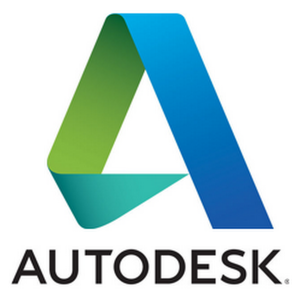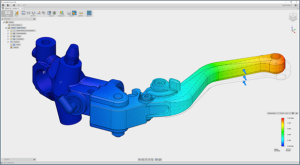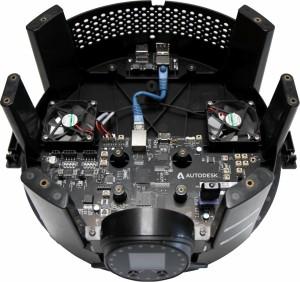 There were a couple of big releases from 3D design and printing company Autodesk this week. First and perhaps the most notable was full open source release of the electronics and firmware for Ember, their new SLS 3D printer. When the company announced Ember at last year’s Inside 3D printing Santa Clara, they committed to making both it and their Spark software completely open source. There was a bit of doubt as to their actual willingness to do so, but Autodesk has slowly been living up to their promise. First when they made their standard clear PR48 resin open source and again when they released Ember’s mechanical design specs.
There were a couple of big releases from 3D design and printing company Autodesk this week. First and perhaps the most notable was full open source release of the electronics and firmware for Ember, their new SLS 3D printer. When the company announced Ember at last year’s Inside 3D printing Santa Clara, they committed to making both it and their Spark software completely open source. There was a bit of doubt as to their actual willingness to do so, but Autodesk has slowly been living up to their promise. First when they made their standard clear PR48 resin open source and again when they released Ember’s mechanical design specs.
As with the previous releases Ember’s electronics and firmware are shared under a Creative Commons Attribution-ShareAlike license and licensed under GNU GPL. Most of the newly released specs are, frankly, far above my head, but they do reveal some interesting information about the advanced 3D printer. The main control board is a very heavily modified version of a standard BeagleBone Black, a low-cost development board that should be relatively simple for anyone to get their hands on. Using relatively easy to source parts is an ideal scenario for developers looking to incorporate Autodesk printing technology into their own 3D printers. This sends a pretty clear signal that Autodesk really is committed to helping the entire 3D printing industry grow.
“Fully opening the design of a precision tool as complicated as Ember is uncharted territory for us. And, we know this isn’t necessarily easy – Ember’s main electronics are a 6-layer board and the design files are in the format of a professional tool. While it might also be difficult to run the firmware without direct access to Ember itself, we have provided a link to the SD card image that could be used on a stock Beaglebone Black for development. However difficult it might be to come along, we hope you’ll recognize our commitment to an open platform and commitment to making the entire field of additive manufacturing better,” Autodesk wrote on their blog.
 In addition to their open sourced goodness, Autodesk also released a new software update to their popular cloud-based CAD program Fusion 360. The update includes some upgrades to the team collaboration feature with multi-user real-time design review and an improved A360 interface. The update also allows users to quickly move their projects from one hub to another. However the biggest new feature is the inclusion of fully integrated, simple simulation capabilities.
In addition to their open sourced goodness, Autodesk also released a new software update to their popular cloud-based CAD program Fusion 360. The update includes some upgrades to the team collaboration feature with multi-user real-time design review and an improved A360 interface. The update also allows users to quickly move their projects from one hub to another. However the biggest new feature is the inclusion of fully integrated, simple simulation capabilities.
Now monthly subscribers will have the ability to perform linear stress test simulations and modal analysis. Users can define material properties, add constraints and stress loads to test for weakness in their designs, and all within the same software that the object was created in. Autodesk also plans to release a future update that will provide thermal and fatigue analysis.
“Simulation traditionally takes multiple software tools and hours of work. Not so with Fusion 360. We made it powerful, but drop-dead simple. And by integrating simulation directly within the design and engineering workflow, users can not only build more viable parts with fewer iterations, but they can also develop intuition and expertise to reach validation more quickly. We see this update as the next critical step in making Fusion 360 the most innovative integrated platform for developing products, from concept all the way to fabrication,” said the Director of Fusion 360 at Autodesk, Kevin Schneider.
This update offers a huge population of designers access to advanced design tools that typically would not be available to them. Most programs that offer robust virtual simulation and testing are industrial programs often far too expensive for the average user. But Fusion 360 is a cloud-based subscription CAD program that only costs $25 a month for an annual subscription and is offered at no cost to thousands of students, educators, hobbyists and new tech startups. It looks like this is a good time to be an independent 3D design and 3D printer manufacturer.
Let us know your thoughts on this move in the Ember 3D Printer forum thread on 3DPB.com.
Subscribe to Our Email Newsletter
Stay up-to-date on all the latest news from the 3D printing industry and receive information and offers from third party vendors.
You May Also Like
Precision at the Microscale: UK Researchers Advance Medical Devices with BMF’s 3D Printing Tech
University of Nottingham researchers are using Boston Micro Fabrication‘s (BMF) 3D printing technology to develop medical devices that improve compatibility with human tissue. Funded by a UK grant, this project...
3D Printing Webinar and Event Roundup: April 21, 2024
It’s another busy week of webinars and events, starting with Hannover Messe in Germany and continuing with Metalcasting Congress, Chinaplas, TechBlick’s Innovation Festival, and more. Stratasys continues its advanced training...
3D Printing Webinar and Event Roundup: March 17, 2024
It’s another busy week of webinars and events, including SALMED 2024 and AM Forum in Berlin. Stratasys continues its in-person training and is offering two webinars, ASTM is holding a...
3D Printed Micro Antenna is 15% Smaller and 6X Lighter
Horizon Microtechnologies has achieved success in creating a high-frequency D-Band horn antenna through micro 3D printing. However, this achievement did not rely solely on 3D printing; it involved a combination...






























